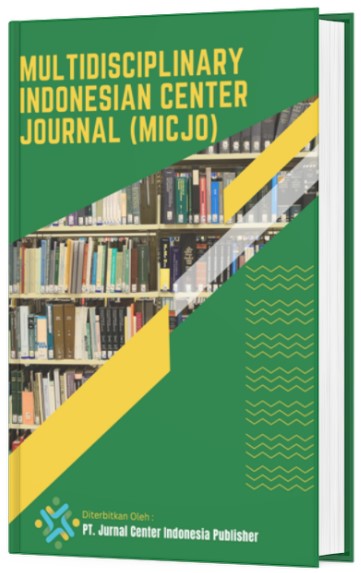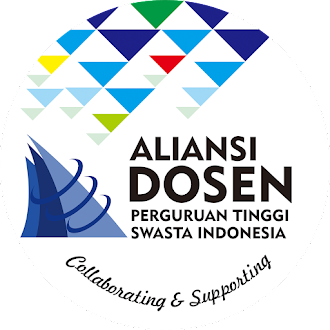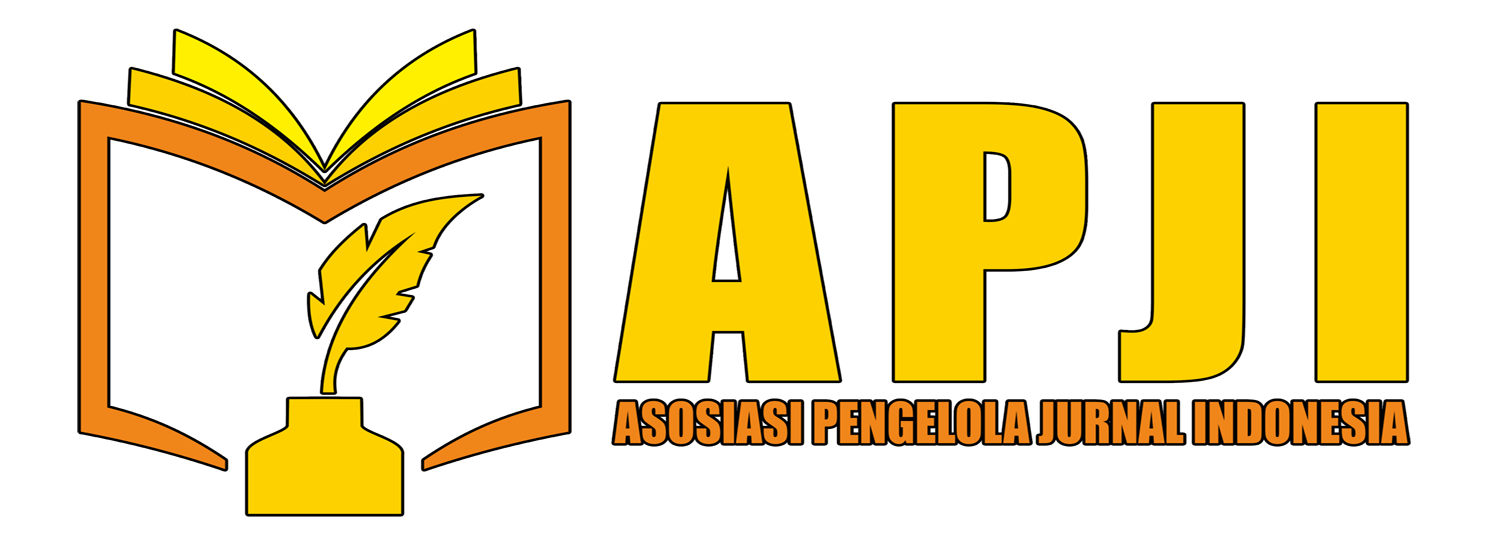MEDICAL EMERGENCIES IN SUNNAH CUPPING THERAPY: A CLINICAL REVIEW AND ISLAMIC ETHICAL PERSPECTIVE
DOI:
https://doi.org/10.62567/micjo.v2i3.741Keywords:
complications of prophetic cupping, educational risk in hijamah practice, Islamic protocol for cupping safety, pre-cupping patient screening, sharia-compliant cupping standardsAbstract
Sunnah cupping therapy is widely recognized as part of prophetic medicine with spiritual and therapeutic benefits. However, its implementation often overlooks potential medical emergencies, especially when conducted without proper safety protocols. This study aims to identify types of medical emergencies associated with sunnah cupping therapy through a critical literature review. A descriptive-qualitative approach was used, based on a systematic review of scientific publications from 2010 to 2024 obtained from databases such as PubMed, ScienceDirect, and Google Scholar. The results revealed seven major types of complications in cupping practice: infections (local to systemic), severe bleeding and hematoma, vasovagal and hypovolemic shock, allergic reactions, burns (in fire cupping), neurological responses (epilepsy), and dissociative psychological responses (possession). These complications are primarily caused by the lack of medical screening, limited practitioner training, and absence of emergency handling protocols. The study emphasizes the urgency of integrating Islamic ethical values with emergency medical standards in cupping practice. It recommends enhancing public education, practitioner certification, and clinical regulations to ensure patient safety.
Downloads
References
Alajmi, T., Aljulaihim, A., Alzahrani, M., & Al-Juhayyiam, S. (2021). Necrotizing fasciitis following wet cupping: a case report. Cureus. https://doi.org/10.7759/cureus.14039
AlBedah, A., Elsubai, I., Qureshi, N., Aboushanab, T., Ali, G., El-Olemy, A., … & Alqaed, M. (2019). The medical perspective of cupping therapy: effects and mechanisms of action. Journal of Traditional and Complementary Medicine, 9(2), 90-97. https://doi.org/10.1016/j.jtcme.2018.03.003
Alfiyansah, R. (2018). Pengaruh terapi bekam basah terhadap tekanan darah pada pasien hipertensi di rumah bekam ruqyyah syar’iyyah kabupaten garut. Jurnal Medika Cendikia, 5(02), 133-141. https://doi.org/10.33482/medika.v5i02.88
Alizadeh, M., Nafari, A., Moradi, F., Beyranvand, F., Ahmadvand, H., Birjandi, M., … & Kiani, A. (2022). The effect of wet cupping (al-hijamah) and limonene on oxidative stress and biochemical parameters in diabetic rats. Jundishapur Journal of Natural Pharmaceutical Products, 17(4). https://doi.org/10.5812/jjnpp-122231
Al-Nwany, N., Ahmad, N., Nawi, A., Hassan, M., Hod, R., & Baharom, M. (2021). Seroprevalence of hepatitis b virus infection and its associated factors among blood donors in yemen. Malaysian Journal of Medical Sciences, 28(5), 54-63. https://doi.org/10.21315/mjms2021.28.5.5
Al-Shidhani, A. and Al-Mahrezi, A. (2021). The role of cupping therapy in pain management: a literature review. https://doi.org/10.5772/intechopen.93851
Andini, R. (2022). Pendidikan berbasis masyarakat dalam al-qur’an. Mau Izhah, 12(1), 61. https://doi.org/10.55936/mauizhah.v12i1.90
Andi, S. and Setyawan, A. (2022). The effectiveness of wet cupping therapy against menstrual pain (dysmenorrhea) on college student nursing of stikes surya global yogyakarta. International Journal of Islamic and Complementary Medicine, 3(1), 35-41. https://doi.org/10.55116/ijicm.v3i1.37
Azizpour, A., Nasimi, M., Shokoei, S., Mohammadi, F., & Azizpour, A. (2018). Bullous pemphigoid induced by hijama therapy (cupping). Dermatology Practical & Conceptual, 8(3), 163-165. https://doi.org/10.5826/dpc.0803a01
Buran-Omar, A. P. and Alaban, A. (2022). Integrating al-hijamah into the healthcare system in saudi arabia: hospital staff’s perception, possible use, and acceptability. Complementary Medicine Research, 29(3), 228-234. https://doi.org/10.1159/000522469
Çetinkaya, A., Fidan, E., Göksu, S., Bozat, B., & Demír, Ş. (2021). Evaluation of the protective effect of the cup therapy on the epileptic seizure in rats. Konuralp Tıp Dergisi, 13(3), 606-613. https://doi.org/10.18521/ktd.777484
Coffin, S., & Raj, S. R. (2014). Non-invasive management of vasovagal syncope. Autonomic Neuroscience: Basic and Clinical, 184, 27–32. https://doi.org/10.1016/j.autneu.2014.06.004
Desfika, S., Ichwan, M., & Ardinata, D. (2022). Wet cupping’s effect on nitric oxide levels in hypertensive patients. Open Access Macedonian Journal of Medical Sciences, 10(A), 214-219. https://doi.org/10.3889/oamjms.2022.8415
During, E., Elahi, F., Taïeb, O., Moro, M., & Baubet, T. (2011). A critical review of dissociative trance and possession disorders: etiological, diagnostic, therapeutic, and nosological issues. The Canadian Journal of Psychiatry, 56(4), 235-242. https://doi.org/10.1177/070674371105600407
Fang, X., Xu, M., Fang, Q., Tan, H., Zhou, J., Li, Z., … & Yang, S. (2018). Real-time utilization of metagenomic sequencing in the diagnosis and treatment monitoring of an invasive adenovirus b55 infection and subsequent herpes simplex virus encephalitis in an immunocompetent young adult. Open Forum Infectious Diseases, 5(6). https://doi.org/10.1093/ofid/ofy114
Foppen, M., Lodewijkx, R., Bandral, H., Yah, K., Slot, K., Vandertop, W., … & Verbaan, D. (2024). Factors associated with success of conservative therapy in chronic subdural hematoma: a single-center retrospective analysis. Journal of Neurology, 271(6), 3586-3594. https://doi.org/10.1007/s00415-024-12307-2
Fung, H., Geng, F., Yuan, D., Zhan, N., & Lee, V. (2023). Childhood experiences and dissociation among high school students in china: theoretical reexamination and clinical implications. International Journal of Social Psychiatry, 69(8), 1949-1957. https://doi.org/10.1177/00207640231181528
Ghazi, S. (2016). Knowledge, attitude and practice of cupping therapy among saudi patients attending primary healthcare in makkah, kingdom of saudi arabia. International Journal of Medical Science and Public Health, 5(5), 966. https://doi.org/10.5455/ijmsph.2016.02022016347
Ginting, S. and Effendy, E. (2019). Post-dissociative trance disorder: traditional culture of nini pagar from tigabinanga. Open Access Macedonian Journal of Medical Sciences, 7(16), 2685-2687. https://doi.org/10.3889/oamjms.2019.411
Han, J., Kim, Y., Kim, J., Kim, D., Lee, G., & Kim, C. (2014). Anesthetic management for lung adenocarcinoma experienced acute neurocardiogenic syncope and cardiac arrest. The Ewha Medical Journal, 37(Suppl), S28. https://doi.org/10.12771/emj.2014.37.s.s28
Hecker, T., Braitmayer, L., & Duijl, M. (2015). Global mental health and trauma exposure: the current evidence for the relationship between traumatic experiences and spirit possession. European Journal of Psychotraumatology, 6(1). https://doi.org/10.3402/ejpt.v6.29126
Hefny, A. F., Kaka, L. N., Salim, E. I., & Khoury, N. (2015). Unusual case of life-threatening subcutaneous hemorrhage in a blunt trauma patient. International Journal of Surgery Case Reports, 15, 119–122. https://doi.org/10.1016/j.ijscr.2015.08.035
Hendriko, T. and Effendy, E. (2019). Kuda kepang: a case report of javanese cultural-related trance in medan. Open Access Macedonian Journal of Medical Sciences, 7(16), 2705-2707. https://doi.org/10.3889/oamjms.2019.823
Hidayati, H., Machfoed, M., Kuntoro, K., Soetojo, S., Santoso, B., Suroto, S., … & Utomo, B. (2019). Bekam sebagai terapi alternatif untuk nyeri. Majalah Kedokteran Neurosains Perhimpunan Dokter Spesialis Saraf Indonesia, 36(2). https://doi.org/10.52386/neurona.v36i2.69
Kaki, A., Sawsan, R., Samiha, M., Jaouni, S., Elalah, M., & Ibrahim, N. (2019). Wet cupping reduces pain and improves health-related quality of life among patients with migraine: a prospective observational study. Oman Medical Journal, 34(2), 105-109. https://doi.org/10.5001/omj.2019.21
Kenny, R. A., & McNicholas, T. (2016). The management of vasovagal syncope. QJM: An International Journal of Medicine, 109(12), 767–773. https://doi.org/10.1093/qjmed/hcw089
Khaleel, K. (2020). Furosemide in hypovolemic shock. Al-Kindy College Medical Journal, 16(2), 39–44. https://doi.org/10.47723/kcmj.v16i2.267
Kim, K., Kim, T., Hwangbo, M., & Yang, G. (2012). Anaemia and skin pigmentation after excessive cupping therapy by an unqualified therapist in korea: a case report. Acupuncture in Medicine, 30(3), 227-228. https://doi.org/10.1136/acupmed-2012-010185
Kim, J., Kim, T., Lee, M., Kang, J., Kim, K., Choi, J., … & Choi, S. (2011). Evaluation of wet-cupping therapy for persistent non-specific low back pain: a randomised, waiting-list controlled, open-label, parallel-group pilot trial. Trials, 12(1). https://doi.org/10.1186/1745-6215-12-146
Kim, J., Lee, M., Lee, D., Boddy, K., & Ernst, E. (2011). Cupping for treating pain: a systematic review. Evidence-Based Complementary and Alternative Medicine, 2011(1). https://doi.org/10.1093/ecam/nep035
Kim, T., Kang, J., Kim, K., Lee, M., Kim, J., Kim, J., … & Hong, K. (2012). Cupping for treating neck pain in video display terminal (vdt) users: a randomized controlled pilot trial. Journal of Occupational Health, 54(6), 416-426. https://doi.org/10.1539/joh.12-0133-oa
Korkut, S., Çürük, G., & Oğuzhan, A. (2017). Effect of ice bag application to femoral region on pain in patients undergoing percutaneous coronary intervention. Pain Research and Management, 2017, 6594782. https://doi.org/10.1155/2017/6594782
Külahçi, Y., Sever, C., Şahi̇n, C., & Evinç, R. (2011). Burn caused by cupping therapy. Journal of Burn Care & Research, 32(2), e31. https://doi.org/10.1097/bcr.0b013e31820ab104
Lakshmi, C. (2014). Allergic contact dermatitis (type iv hypersensitivity) and type i hypersensitivity following aromatherapy with ayurvedic oils (dhanwantharam thailam, eladi coconut oil) presenting as generalized erythema and pruritus with flexural eczema. Indian Journal of Dermatology, 59(3), 283. https://doi.org/10.4103/0019-5154.131402
Lauche, R., Cramer, H., Hohmann, C., Choi, К., Rampp, T., Saha, F., … & Dobos, G. (2012). The effect of traditional cupping on pain and mechanical thresholds in patients with chronic nonspecific neck pain: a randomised controlled pilot study. Evidence-Based Complementary and Alternative Medicine, 2012, 1-10. https://doi.org/10.1155/2012/429718
Lauche, R., Cramer, H., Langhorst, J., & Dobos, G. (2013). Cupping for chronic nonspecific neck pain: a 2-year follow-up. Complementary Medicine Research, 20(5), 328-333. https://doi.org/10.1159/000355634
Lee, M., Kim, J., Kong, J., Lee, D., & Shin, B. (2010). Developing and validating a sham cupping device. Acupuncture in Medicine, 28(4), 200-204. https://doi.org/10.1136/aim.2010.002329
Li'wuliyya, S. (2024). Alternatif pilihan intervensi non-farmakologi terhadap penurunan tekanan darah penderita hipertensi: systematic review. Quality Jurnal Kesehatan, 18(1), 27-38. https://doi.org/10.36082/qjk.v18i1.1247
Lu, M., Yang, C., Tsai, S., Hung, C., & Chen, S. (2020). Intraperitoneal hemorrhage after cupping therapy. Hong Kong Journal of Emergency Medicine, 27(2), 107-109. https://doi.org/10.1177/1024907918784076
Malave, B., & Vrooman, B. (2022). Vasovagal reactions during interventional pain management procedures—A review of pathophysiology, incidence, risk factors, prevention, and management. Medical Sciences, 10(3), 39. https://doi.org/10.3390/medsci10030039
Mohamed, A., Zhang, X., & Jan, Y. (2023). Evidence-based and adverse-effects analyses of cupping therapy in musculoskeletal and sports rehabilitation: a systematic and evidence-based review. Journal of Back and Musculoskeletal Rehabilitation, 36(1), 3-19. https://doi.org/10.3233/bmr-210242
Mohammadi, S., Roostayi, M., Naimi, S., & Baghban, A. (2019). The effects of cupping therapy as a new approach in the physiotherapeutic management of carpal tunnel syndrome. Physiotherapy Research International, 24(3). https://doi.org/10.1002/pri.1770
Moon, S., Han, H., & Rhie, J. (2011). Factitious panniculitis induced by cupping therapy. Journal of Craniofacial Surgery, 22(6), 2412-2414. https://doi.org/10.1097/scs.0b013e318231fed6
Mrad, M., Mardan, Q., Kariri, S., & Merdad, K. (2022). When a traditional medicine customer becomes a plastic surgery patient. Plastic and Reconstructive Surgery Global Open, 10(11), e4669. https://doi.org/10.1097/gox.0000000000004669
Mupida, S. (2020). Penyembuhan islam dan otoritas keagamaan: studi kasus ustaz dhanu. Hanifiya Jurnal Studi Agama-Agama, 3(1), 27-34. https://doi.org/10.15575/hanifiya.v3i1.8095
Mushtaq, A., Bilal, M., & Hussein, E. (2024). An exploratory study: controversial beliefs and practices of hijama practitioners of karachi, pakistan. European Journal of Theoretical and Applied Sciences, 2(6), 131-143. https://doi.org/10.59324/ejtas.2024.2(6).10
Mustika, D. (2018). Al hijâmah sebagai wasilah dakwah. Ath Thariq Jurnal Dakwah Dan Komunikasi, 1(2), 204. https://doi.org/10.32332/ath_thariq.v1i02.1027
Nuridah, N. and Yodang, Y. (2021). Pengaruh terapi bekam terhadap tekanan darah pada penderita hipertensi: studi quasy eksperimental. Jurnal Kesehatan Vokasional, 6(1), 53. https://doi.org/10.22146/jkesvo.62909
Ogino, H., Okuno, T., Murano, K., & Ueno, H. (2021). Naturally oxidized olive oil promotes active cutaneous anaphylaxis and th2 cytokine production. Biological and Pharmaceutical Bulletin, 44(6), 838-843. https://doi.org/10.1248/bpb.b21-00065
Oktar, D., Metintaş, S., Önsüz, M., Öcal, E., & PALA, S. (2023). Complementary and alternative medicine uses of individuals diagnosed with chronic diseases. Clinical and Experimental Health Sciences, 13(1), 184-191. https://doi.org/10.33808/clinexphealthsci.1185236
Park, S., & Kim, S. (2010). An anesthetic experience with cesarean section in a patient with vasovagal syncope: A case report. Korean Journal of Anesthesiology, 59(2), 130–133. https://doi.org/10.4097/kjae.2010.59.2.130
Pradhan, M., Pradhan, A., Upadhyay, H., & Shrestha, A. (2022). Shock index in predicting fluid resuscitation in patients with hypovolemic shock. Journal of Gandaki Medical College-Nepal, 15(2), 128–132. https://doi.org/10.3126/jgmcn.v15i2.50286
Prasetya, A., & Handian, F. (2023). The effect of ice gel pack on pain reduction of sheath removal in post-cardiac catheterization patients. The Journal of Palembang Nursing Studies, 2(1), 67–74. https://doi.org/10.55048/jpns.v2i1.79
Rahardanto, M., Sudagijono, J., Susilo, J., Simon, S., Hartini, N., & Ardi, R. (2024). Dissociative symptoms among individuals affected by mass psychogenic illness: a study on the indonesian island of nias. Journal of Educational Health and Community Psychology, 13(1), 114. https://doi.org/10.12928/jehcp.v13i1.28380
Randmaa, M., Mårtensson, G., Swenne, C. L., & Engström, M. (2014). SBAR improves communication and safety climate and decreases incident reports due to communication errors in an anaesthetic clinic: A prospective intervention study. BMJ Open, 4(1), e004268. https://doi.org/10.1136/bmjopen-2013-004268
Risniati, Y., Afrilia, A., Lestari, T., Nurhayati, N., & Siswoyo, H. (2020). Pelayanan kesehatan tradisional bekam: kajian mekanisme, keamanan dan manfaat. Jurnal Penelitian Dan Pengembangan Pelayanan Kesehatan, 212-225. https://doi.org/10.22435/jpppk.v3i3.2658
Salama, A., Dabash, M., Elayan, A., Saadeh, S., & Ikhmayyes, I. (2024). Dissociative trance led to a catastrophe: a case report. Cureus. https://doi.org/10.7759/cureus.76458
Salmiyah, E., Barus, S., & Reza, M. (2021). Pengaruh metode therapy bekam basah terhadap penurunan tekanan darah pada lansia dengan hipertensi di rumah sehat nur sunda gus mus therapy cianjur. JKBL, 14(1), 351-356. https://doi.org/10.62817/jkbl.v14i1.138
Şar, V. (2011). Epidemiology of dissociative disorders: an overview. Epidemiology Research International, 2011, 1-8. https://doi.org/10.1155/2011/404538
Şar, V. (2014). The many faces of dissociation: opportunities for innovative research in psychiatry. Clinical Psychopharmacology and Neuroscience, 12(3), 171-179. https://doi.org/10.9758/cpn.2014.12.3.171
Şar, V. (2022). Dissociation across cultures: a transdiagnostic guide for clinical assessment and management. Alpha Psychiatry, 23(3), 95-103. https://doi.org/10.5152/alphapsychiatry.2021.21556
Sayed, S., Al-quliti, A., Mahmoud, H., Baghdadi, H., Maria, R., Nabo, M., … & Hefny, A. (2014). Therapeutic benefits of al-hijamah: in light of modern medicine and prophetic medicine. American Journal of Medical and Biological Research, 2(2), 46-71. https://doi.org/10.12691/ajmbr-2-2-3
Setyawan, W. (2022). Efektivitas bekam terhadap penurunan tekanan darah systole pada pasien hipertensi. Nursing Science Journal (Nsj), 3(1), 11-17. https://doi.org/10.53510/nsj.v3i1.109
Shamsudin, S. (2021). Maqashid al-syari’ah al-syathibi sebagai dasar perumusan hukum islam dan penerapannya dalam membaca konsep nusyuz dalam q.s. an-nisa: 34. Jurnal Sosial Dan Sains, 1(11). https://doi.org/10.36418/sosains.v1i11.264
Soliman, Y., Hamed, N., & Khachemoune, A. (2018). Cupping in dermatology: a critical review and update. Acta Dermatovenerologica Alpina Pannonica Et Adriatica, 27(2). https://doi.org/10.15570/actaapa.2018.21
Sutriyono, S., Robbina, M., & Ndii, M. (2019). The effects of wet cupping therapy in blood pressure, glucose, uric acid and total cholesterol levels. Biology Medicine & Natural Product Chemistry, 8(2), 33-36. https://doi.org/10.14421/biomedich.2019.82.33-36
Syahputra, A., Dewi, W., & Novayelinda, R. (2019). Studi fenomenologi: kualitas hidup pasien hipertensi setelah menjalani terapi bekam. Jurnal Ners Indonesia, 9(1), 19. https://doi.org/10.31258/jni.9.1.19-32
Syahputra, Y., Marsono, M., Azmi, Z., Ginting, R., Rahmadiansyah, D., Muhazir, A., … & Tarigan, R. (2023). Kegiatan bakti sosial layanan bekam gratis di dusun vii desa bandar setia tembung. Abdimas Iptek, 3(2), 167. https://doi.org/10.53513/abdi.v3i2.8806
Snyder, H. (2019). Literature review as a research methodology: an overview and guidelines. Journal of Business Research, 104, 333-339. https://doi.org/10.1016/j.jbusres.2019.07.039
Unat, B., Yerlikaya, F., Alp, H., & Onmaz, D. (2023). Wet cupping therapy removes oxidative stress related mirnas. Archives of Current Medical Research, 4(3), 178-185. https://doi.org/10.47482/acmr.1285642
Vassilopoulos, A., Vassilopoulos, S., Kalligeros, M., Shehadeh, F., & Mylonakis, E. (2023). Incidence of serious infections in patients with anca-associated vasculitis receiving immunosuppressive therapy: a systematic review and meta-analysis. Frontiers in Medicine, 10. https://doi.org/10.3389/fmed.2023.1110548
Vincent, J. L., & De Backer, D. (2013). Circulatory shock. The New England Journal of Medicine, 369(18), 1726–1734. https://doi.org/10.1056/NEJMra1208943
Wang, Y., An, C., Song, S., Lei, F., & Wang, Y. (2018). Cupping therapy for knee osteoarthritis: a synthesis of evidence. Complementary Medicine Research, 25(4), 249-255. https://doi.org/10.1159/000488707
Wang, Y., Fan, H., Huang, X., & Jiao, Y. (2023). Disseminated staphylococcus aureus infection after scarification wet cupping therapy: a case report and literature review. BMC Complementary Medicine and Therapies, 23(1). https://doi.org/10.1186/s12906-023-03932-x
Widyatmoko, C., Tan, E., Seyle, D., Mayawati, E., & Silver, R. (2011). Coping with natural disasters in yogyakarta, indonesia: the psychological state of elementary school children as assessed by their teachers. School Psychology International, 32(5), 484-497. https://doi.org/10.1177/0143034311402919
Wieling, W., Rozenberg, J., Schön, I., Karemaker, J. M., Westerhof, B. E., & Jardine, D. L. (2011). Prolonged post-faint hypotension can be reversed by dynamic tension. Clinical Autonomic Research, 21(6), 415–418. https://doi.org/10.1007/s10286-011-0133-7
Wu, Z., Fung, H., Chien, W., Ross, C., & Lam, S. (2022). Trauma and dissociation among inpatients diagnosed with schizophrenia spectrum disorders in taiwan. European Journal of Psychotraumatology, 13(2). https://doi.org/10.1080/20008066.2022.2105576
Xiao, L., Ling, F., Tan, L., Li, H., Hu, C., Luo, Y., … & Sun, L. (2014). Spontaneous calf hematoma in a patient with diabetic nephropathy receiving maintenance hemodialysis: a case report and review of the literature. Hemodialysis International, 19(4). https://doi.org/10.1111/hdi.12246
Yolcu, Ü., Şahin, Ö., & Gündoğan, F. (2014). Imaging in ophthalmology. InTechOpen. https://doi.org/10.5772/58314
Zein, A., Alqahtani, M., Alnajar, A., Alali, A., Alasmari, M., Alduaig, K., … & Albadawi, M. (2022). Classification, pathophysiology and principle of therapy of shock. International Journal of Community Medicine and Public Health, 9(9), 3613. https://doi.org/10.18203/2394-6040.ijcmph20222092
Downloads
Published
How to Cite
Issue
Section
License
Copyright (c) 2025 Andik Isdianto, Novariza Fitrianti

This work is licensed under a Creative Commons Attribution-ShareAlike 4.0 International License.

















